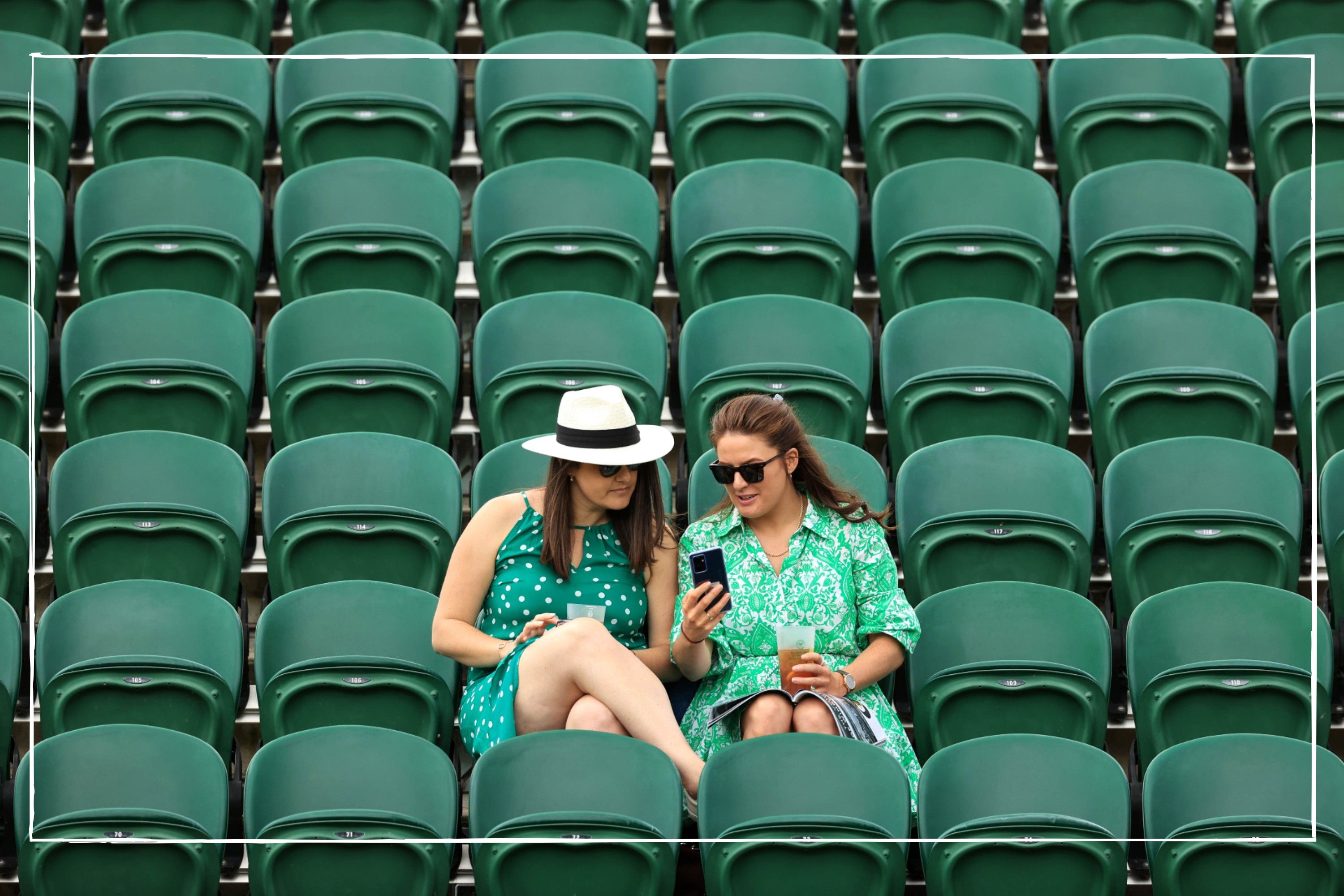Why are there empty seats in Wimbledon and how much are centre court tickets? Plus details on the Wimbledon ballot
Fans are noticing the amount of empty seats in Wimbledon this year

Maddy Biddulph

The much-loved tennis tournament, Wimbledon, is back for another year but fans are confused over why there are so many empty seats.
While queues have returned to the famous tournament, attendance has been much lower than expected. Organisers had expected 42,000 spectators daily - the maximum capacity - but many seats have been left empty. A lack of bums on seats has even been the case for big matches featuring defending women's champion Elena Rybakina, and even Sir Andy Murray.
So why are there empty seats in Wimbledon this year and could you afford a Centre Court ticket? We reveal everything you need to know about getting tickets for the most famous tennis tournament in the world.
Why are there empty seats at Wimbledon?
There's no definitive answer as to why there are so many empty seats at this year's Wimbledon, but poor weather, ticket prices and luxury hospitality options might be possible reasons for the lack of attendance.
One theory is that the smaller numbers could be down to the high price of tickets, with many fans shunning the premium options, that cost up to £95.
Amid the cost of living crisis, only 36,603 fans attended the first day while 39,450 went on the second and the expensive tickets could be to blame. The fact that fan favourite Roger Federer isn't competing this year could be another reason for the low numbers, although he did make a surprise guest appearance on Centre Court on day two. The eight time Wimbledon champion retired from tennis last September but was invited back to the All England Club for a celebration of his career.
A post shared by Wimbledon (@wimbledon)
A photo posted by on
Another theory over the empty seats in Wimbledon is that hospitality ticket holders are skipping the tennis matches in favour of "wining and dining."
Parenting advice, hot topics, best buys and family finance tips delivered straight to your inbox.
The seats, which are located around the Royal Box, are believed to be reserved for corporate guests and members of the Lawn Tennis Association (LTA) and All England Lawn Tennis Club.
Paul Miller, the founder of Eden Mill, the official gin partner to the LTA, described the benefits of having a hospitality ticket. He told the Guardian: "The ability to have the peaceful little bit of time away from all the hubbub around Wimbledon where there’s a lot of noise and a lot of action going on and being able to step outside and be looked after for a brief time in between matches in that [hospitality] area."
He added: “The ability to be able to drop in and drop out of the tennis, see as much or as little as you want, and also in our case where we’re hosting a lot of guests – to be able to allow them to do as they wish.”
However, the empty seats could also simply be because of the wet weather the UK is currently experiencing.
Are seats allocated at Wimbledon?
How seats are allocated at Wimbledon depends partly on how you got your ticket. If you applied for a ticket through the public ballot (which is now closed) and your application was successful, you would have been notified of the court number, date and seat number of your ticket.
The AELTC allocates around 500 tickets (per court) for Centre Court, Court No. 1, and Court No.2 for each day of play for the Wimbledon Queue. You don't find out your seat numbers until the tickets are allocated in The Queue (which operates on a first come first served basis).
Debenture Ticket seats offer the best views of Centre Court or No. 1 Court and are the only tickets that are allowed to be bought, sold, or swapped.
The Debenture Office allocates specific seat numbers in May before the Tournament. If you have a Debenture Ticket before this date, your seat will be automatically assigned and you could end up on any of the Debenture seat rows - over the side-line or baseline.
Once seats are allocated, many specific seat tickets are bought, sold and swapped between ticket holders.
Take a look at the seating plan for Wimbledon to find out exactly which ticket number would give you which seat.
How much is a seat on Centre Court at Wimbledon?
As you might expect, Centre Court tickets for Wimbledon are the most expensive, costing up to £255. The cheapest Centre Court tickets come in at £80, while mid-range tickets can cost anything from £90 to £230.
The Centre Court tickets for Wimbledon will cost the lower price of £80 on the first two days of the tournament and rise to £255 for the final - the most coveted match of the tournament. The prices for the first week tend to fluctuate between £80 and £155. The price will then rise to £155 on the second Monday, up to £220 and £255 on the Friday and Saturday before the final.
Wimbledon tickets: How does the Wimbledon ballot work?
The Wimbledon ballot (which is now closed) is public and open to everyone, so anyone is in with a a chance of bagging tickets. There's no charge to enter the ballot, but if you're offered the chance to buy, you can only purchase a maximum of two tickets and you have to pay upfront immediately to reserve them.
You can enter the ballot for Wimbledon tennis tickets via the official Wimbledon site.
A post shared by Wimbledon (@wimbledon)
A photo posted by on
Alternatively, if you still want tickets for this year's tournament, you can still join The Wimbledon Queue.
The AELTC says: "The Queue is a Wimbledon institution, an orderly, sunny-natured party on the move, where the timeless tournament spirit descends in the form of order maintained by cheery Honorary Stewards according to the Queue’s own Official Code of Conduct (no smoking, no gazebos, no food deliveries, music or ball games after 10pm)."
The famous queue is somewhat of a social event, with many taking tents and camping out overnight to be at the front of the line.
How many Ground Passes are there at Wimbledon?
Dubbed 'the ultimate Wimbledon experience', the Ground Pass allows access to exactly what you might expect - the grounds of the Championships. There are several thousand passes available, and they are a more affordable option for tennis fans who want to soak up the atmosphere at the famous tournament.
Starting at £27 and going down to £20 on day 9, £15 on day 12-13 and just £8 on the final day, a Ground Pass will get you into courts No. 3 Court, Court 12, Court 18 and The Hill ONLY, where the action from Centre and No.1 Courts is screened. It's important to note that this pass won't get you into the Show Courts, such as Centre Court, No. 1 Court or No. 2 Court.
As Wimbledon progresses, the price of Ground Passes are reduced from day nine onwards. If you arrive in The Queue (in Wimbledon Park) by 9am, you should have a good chance of getting in, although be prepared to wait a while to secure a ticket.
Tickets are on a first come first served basis, and it's advisable to arrive early, by 9am, to increase your chance of securing a Ground Pass. Overnight camping to get a good spot in the queue is allowed, although you will be woken early at 6am to pack up your tent and start queuing. Remember to keep your Queue Card with you as it will be required when purchasing tickets.

Robyn is a freelance celebrity journalist with ten years experience in the industry. While studying for a degree in Media and Cultural Studies at London College of Communication, she did internships at Now and Heat magazines. After graduating, she landed a job at Star magazine, where she worked her way up to features editor. She then worked at Future as Deputy Celebrity Content Director across Woman, Woman’s Own, Woman’s Weekly and Woman & Home magazines.
- Maddy BiddulphFreelance parenting writer